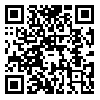Volume 2, Issue 4 (2019)
IQBQ 2019, 2(4): 1-17 |
Back to browse issues page
Download citation:
BibTeX | RIS | EndNote | Medlars | ProCite | Reference Manager | RefWorks
Send citation to:



BibTeX | RIS | EndNote | Medlars | ProCite | Reference Manager | RefWorks
Send citation to:
saghafi H R, kazemi S M J. Effect of Component of Preformed Particle Gels on Swelling Ratio. IQBQ 2019; 2 (4) :1-17
URL: http://arcpe.modares.ac.ir/article-38-31473-en.html
URL: http://arcpe.modares.ac.ir/article-38-31473-en.html
1- Head of Chemical and Thermal Research , h.saghafi@nioc.ir
2- reasercher
2- reasercher
Abstract: (8649 Views)
Gel treatment is one of the most promising remedy methods to improve conformance in heterogeneous reservoirs for better sweep efficiency. In this paper, new enhanced preformed particle gels (PPGs) for conformance control at the Balal reservoir are introduced. In these PPGs, three species of 2-acrylamido-2-methylpropane sulfonic sodium salt (AMPSNa), acrylamide (AM) and N-vinylpyrrolidone (NVP) monomers have been used to synthesize via free radical crosslinking polymerization at room temperature using N,N-methylenebis (acrylamide) (MBA) as a cross linker. The swelling properties of the PPGs were enhanced by adding the Nano clay Montmorillonite Na+. A temperature stability agent was also used to make these special PPGs compatible with high temperature and salinity reservoir conditions. Then, PPGs were kept in Balal reservoir conditions in order to study their stability in harsh reservoir conditions. To this end, combination of 50 samples of the preformed particle gel has already been constructed by design of experiment using response surface method, and finally a new model for predicting the swelling ratio of the preformed particle gel based on the weight percentage of material and in different salinity is provided. The results of this research show that the crosslink has more influence on the swelling ratio, and PPG with the optimal formulation will able to guarantee the hard reservoir conditions (temperature 82˚C & salinity 260000ppm).
Subject:
Biomedical Enginireeng
Received: 2019/03/19 | Accepted: 2019/03/19 | Published: 2019/03/19
Received: 2019/03/19 | Accepted: 2019/03/19 | Published: 2019/03/19
Send email to the article author
| Rights and permissions | |
 |
This work is licensed under a Creative Commons Attribution-NonCommercial 4.0 International License. |







